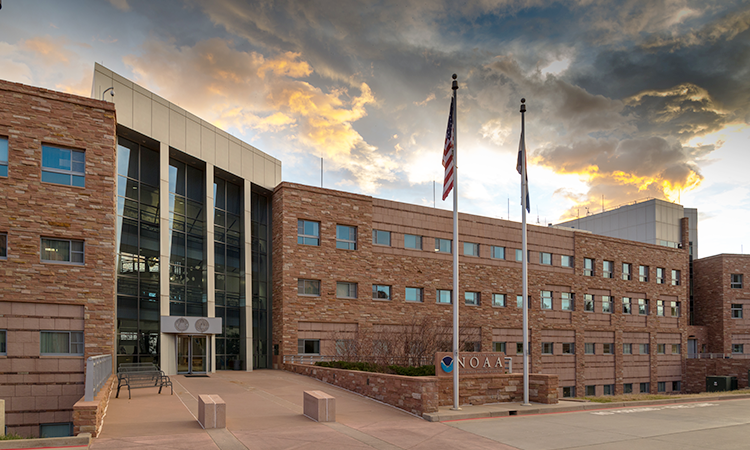Seminar
Chemical, aerosol, and cloud processes in closed and open cells

Jan Kazil, NOAA ESRL CSD & CU CIRES
Wednesday, June 22, 2011, 3:30 pm Mountain Time
DSRC 2A305
Abstract
The stratocumulus-capped marine boundary layer (MBL) is of much interest from a climate system perspective. Bright, reflective clouds overlaying a dark ocean surface exert significant shortwave cooling with no appreciable compensation in the longwave. Atmospheric aerosol is known to modify the brightness of these shallow, warm-phase clouds; increases in the aerosol result in more reflective clouds at a constant liquid water path. Two dynamic states are commonly observed in the stratocumulus-capped MBL: Closed-cell circulation is characterized by high cloud fraction and low drizzle amounts. The circulation is driven by cloud-top radiative cooling resulting in narrow, stronger downdrafts that flank broader regions of weaker updrafts. In contrast, over warm water with strong surface forcing, an open-cell state with broad, cloud-free regions surrounded by narrow, strong updraft regions is the preferred state. Within closed-cell regions, pockets of open cells (POCs) may form with strongly precipitating cell wall clouds which efficiently deplete the MBL aerosol population. Previous work has shown that the MBL cannot maintain the open-cell state without a resupply of particles. Potential sources include wind-driven production of sea salt particles from the ocean, nucleation from the gas phase, and entrainment from the free troposphere.
Here we present highly resolved simulations with the WRF/Chem model, accounting in detail for the coupling of chemical, aerosol, and cloud processes, and discuss the formation, processing, and removal of aerosol particles in the cloudy MBL, and their effect on cloud properties. The simulations reveal a rich network of interactions: For example, at nighttime, cloud liquid water increases in the absence of solar heating, resulting in increased precipitation, stronger cloud top cooling, accelerated boundary layer turbulence, and faster surface wind speeds. Faster surface wind speeds drive an enhanced flux of sea salt aerosol, at a time when aerosol particles are scavenged more readily by enhanced precipitation. In contrast, absorption of solar radiation during daytime reduces cloud water, decelerates boundary layer turbulence, reduces surface wind speeds, and therefore slows surface emissions. This is compensated by photochemically driven nucleation of small aerosol particles from the gas phase in response to the nigh complete removal of pre-existing aerosol by open-cell wall precipitation. Once grown sufficiently large, these newly formed particles serve as cloud condensation nuclei (CCN), and, together with sea salt emissions, buffer the MBL against a reduction of cloudiness.
ALL Seminar attendees agree not to cite, quote, copy, or distribute material presented without the explicit written consent of the seminar presenter. Any opinions expressed in this seminar are those of the speaker alone and do not necessarily reflect the opinions of NOAA or CSL.